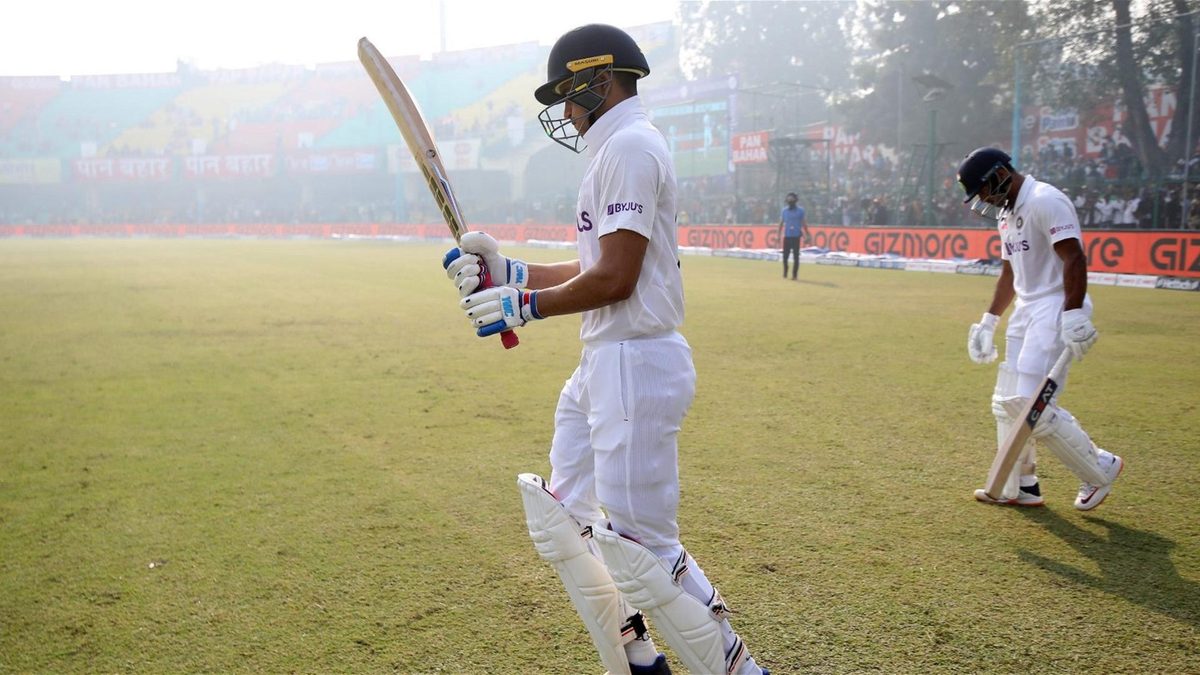
Nearly a year ago, India travelled to Australia and conjured a magical display to clinch the Border-Gavaskar Trophy.
During that rubber, there were many who caught the imagination of the cricketing community. However, not many did so as beautifully as Shubman Gill did. The youngster looked extremely comfortable handling the pace and bounce in Australia.
He stood tall, punched off the back foot into the off side and unfurled silky cover drives. He even played a pivotal role as India conquered the Gabba. The world was touted to be at Gill’s feet. Rightly so too. A home series against England beckoned and the stage seemed set for Gill to enhance his reputation.
In the first Test at Chennai, it seemed that Gill would continue his exceptional form. He notched up his third half-century and looked primed to guide India to safety. And then, everything came to a screeching halt. James Anderson, who was enjoying one of his greatest spells of reverse-swing bowling, left Gill’s stumps in a mess. The dismissal opened up a can of worms, with respect to Gill’s technique.
At the time, Gill hadn’t done too much wrong in Test cricket. He was still averaging around 48. Yet, it was portrayed that a glaring chink existed in his armour. While seeing your stumps cartwheeling isn’t the greatest sight on a cricket field, it certainly shouldn’t have been enough to prompt a change in Gill’s technique. But he bowed to the pressure and made tweaks – tweaks that made him go back, across and into the periphery.
A string of lbw dismissals followed (four out of seven innings) – both during the England series and the World Test Championship final. Bowlers now had another avenue to target Gill and the batter had another problem to deal with. During this period, Gill failed to cross the 30-run mark each time he batted.
He opted to get outside the line, rather than staying beside the ball. At times, he planted his front foot across. On other occasions, he was guilty of falling over to the off side. Either way, it enabled bowlers to nip balls back into him and expose that weakness.
Gill had endured quite a fall from grace. Not only because the runs had dried up but because performances elsewhere had potentially reduced him to an intermittent role with the Test team. Hence, the stakes were pretty high when Gill rocked up at Kanpur. KL Rahul and Rohit Sharma weren’t part of the set-up, meaning that Gill claimed the opening spot unchallenged.
The only impediment could’ve been a cluttered mindset, especially after what transpired against England and in the WTC final. He didn’t pay much heed to it though. Gill went back to the drawing board and reverted to the technique that paid dividends in Australia. And, of course, made him successful during his early career.
At Kanpur, there weren’t many (if any) instances of Gill shuffling across his stumps. He stayed leg-side of the ball for as long as possible and played the ball very late. Quite a few of his scoring shots came on the off-side too. Unsurprisingly, he bagged his first half-century since the first Test at Chennai in February 2021.
The flip side to staying leg-side of the ball is that there will be a gap between bat and pad – a gap that can be exploited like Kyle Jamieson did. The interesting bit, however, is that Gill seems more suited to handling this sort of delivery rather than playing around his front pad – something that was a product of his back and across movement. Batters have to get out somehow, and it at least took an excellent piece of bowling to do so.
Having said that, there are still a few flaws that he needs to iron out. Gill has a tendency to play strokes with his front foot still in motion – something that was seen in his dismissal at Kanpur. That will, quite often, leave him vulnerable to balls pitched fuller. So, it might be better if he only has one extra moving part (bat to ball) rather than two moving parts (bat around pad to ball and bat to ball).
Nevertheless, it will be intriguing to see how Gill approaches the rest of the series. The last time he was castled by an incoming delivery, he chose to twist, rather than stick. As often happens in sport (and life as well), running away from a weakness doesn’t guarantee success if you’re barging into another shortcoming. Thus, he might want to weigh the pros and cons more judiciously.
For the moment, though, it seems that the technique Gill deployed at Kanpur is probably the right way forward. Not just to score runs but have the world at his feet all over again.








